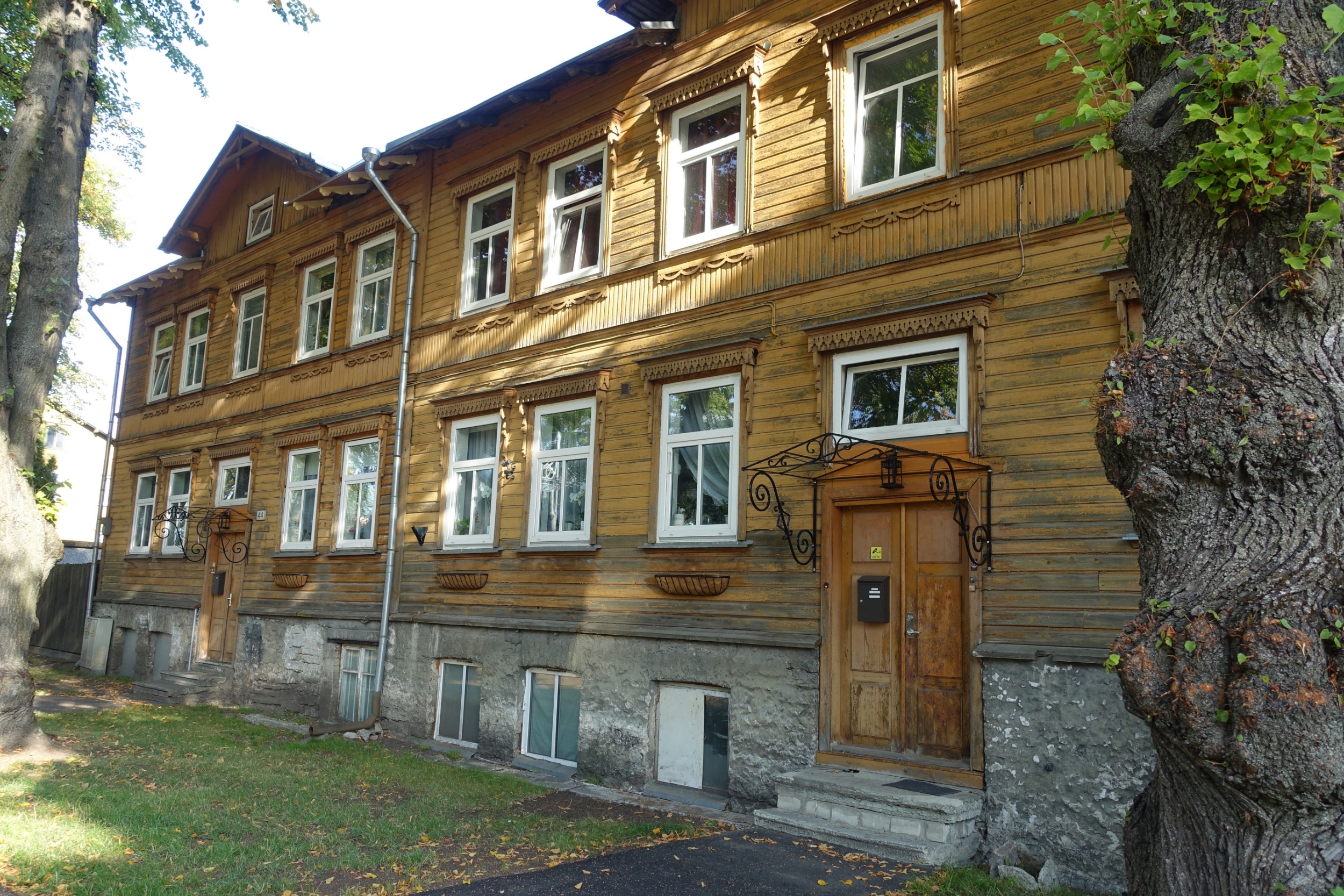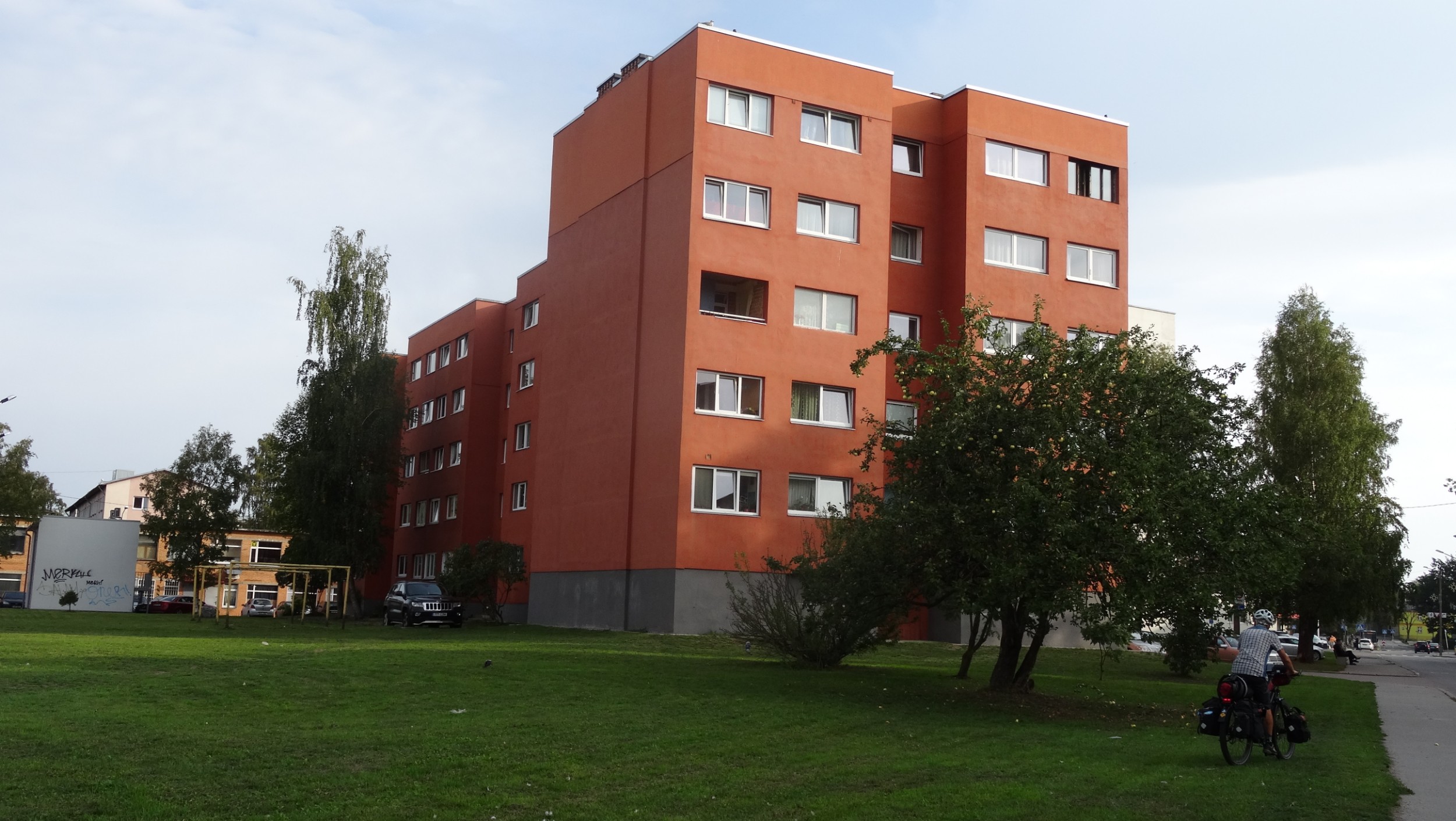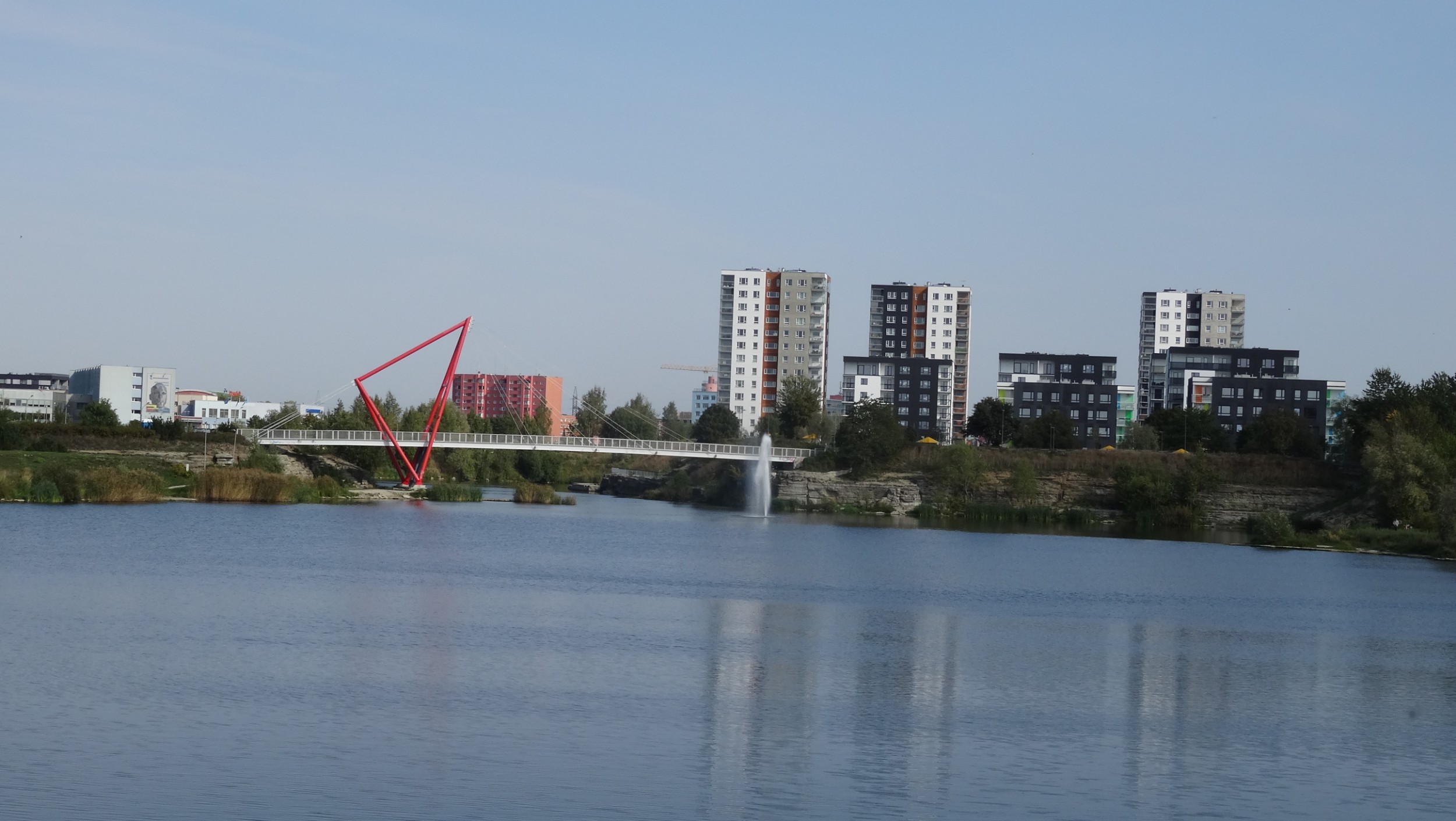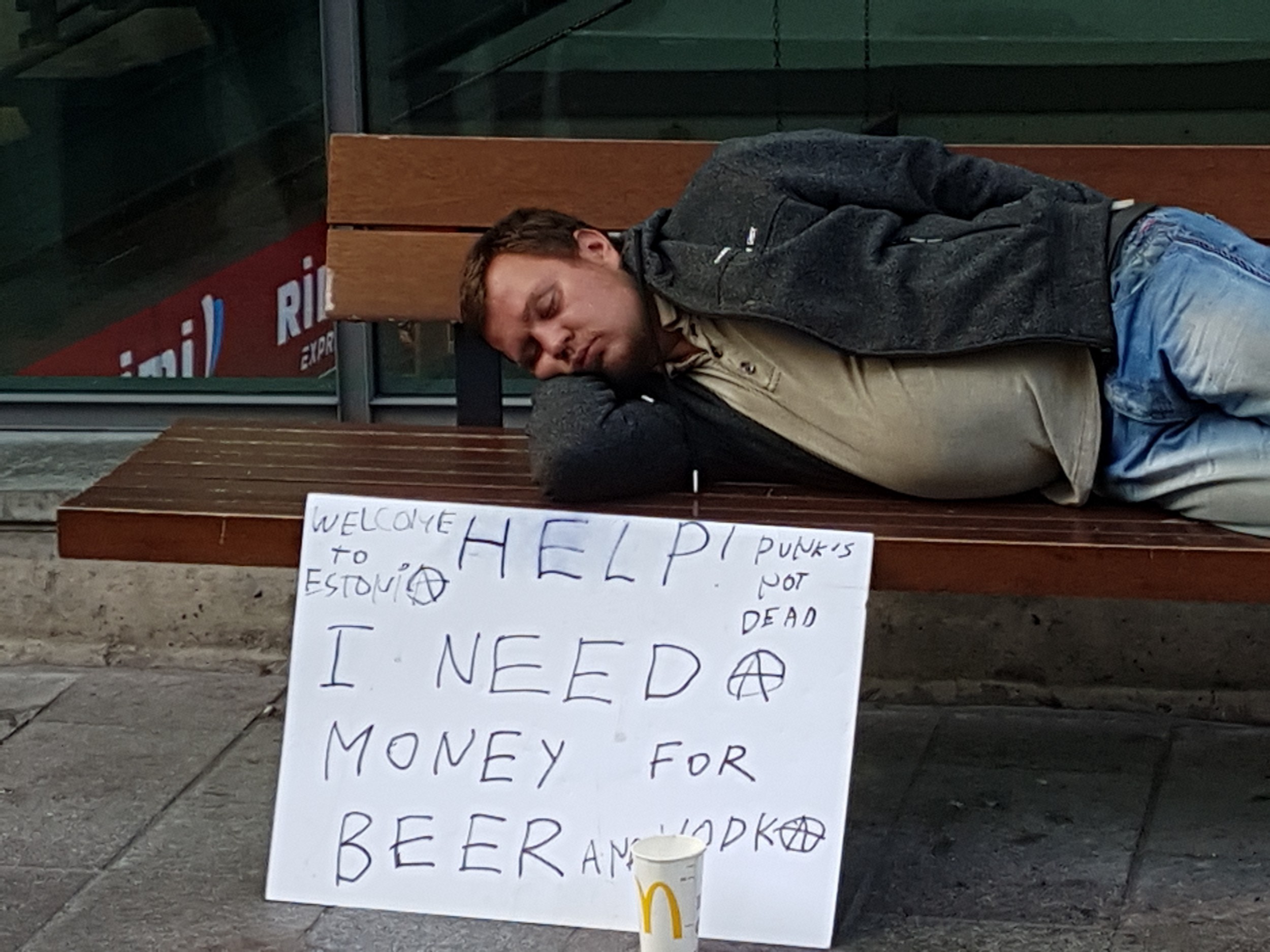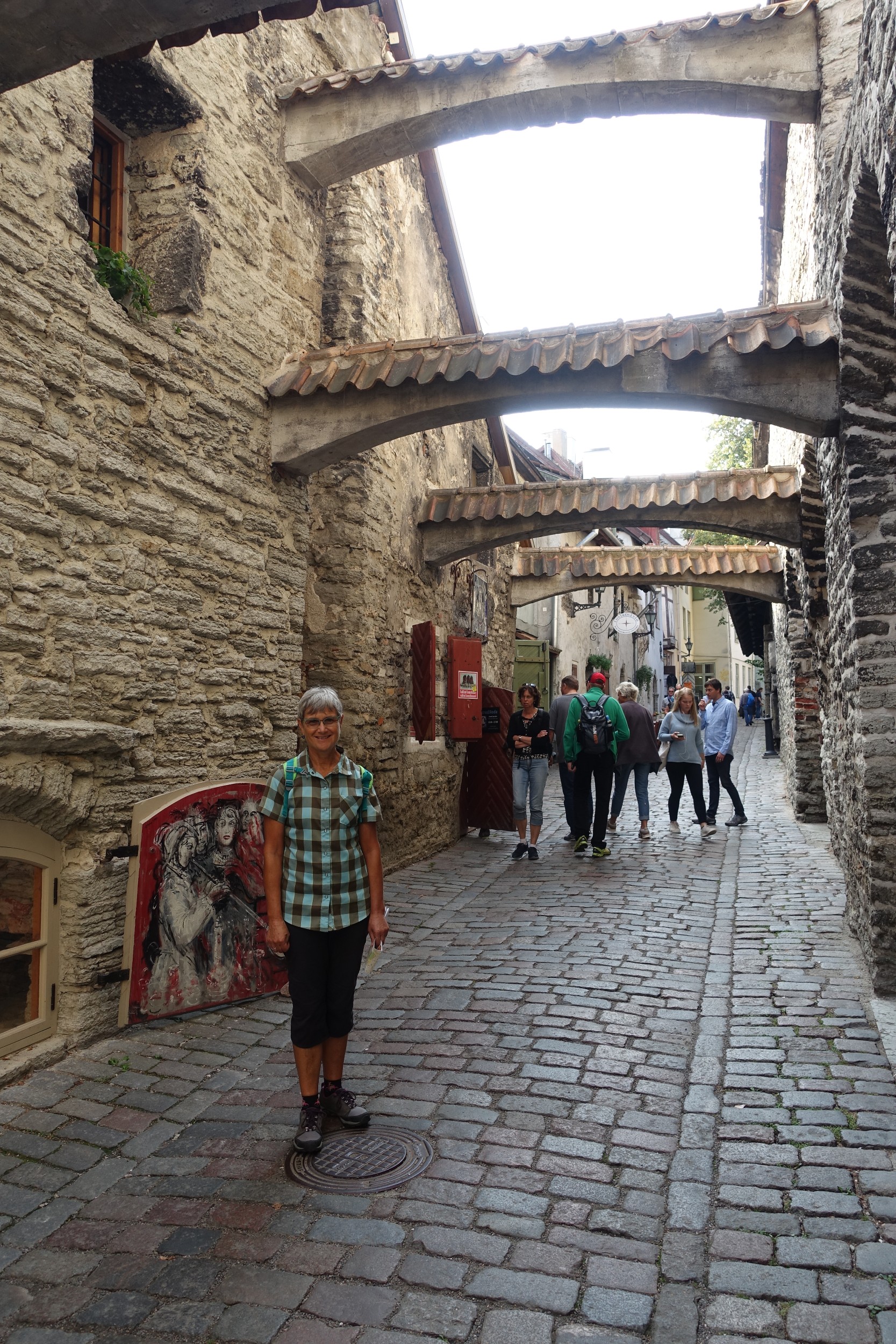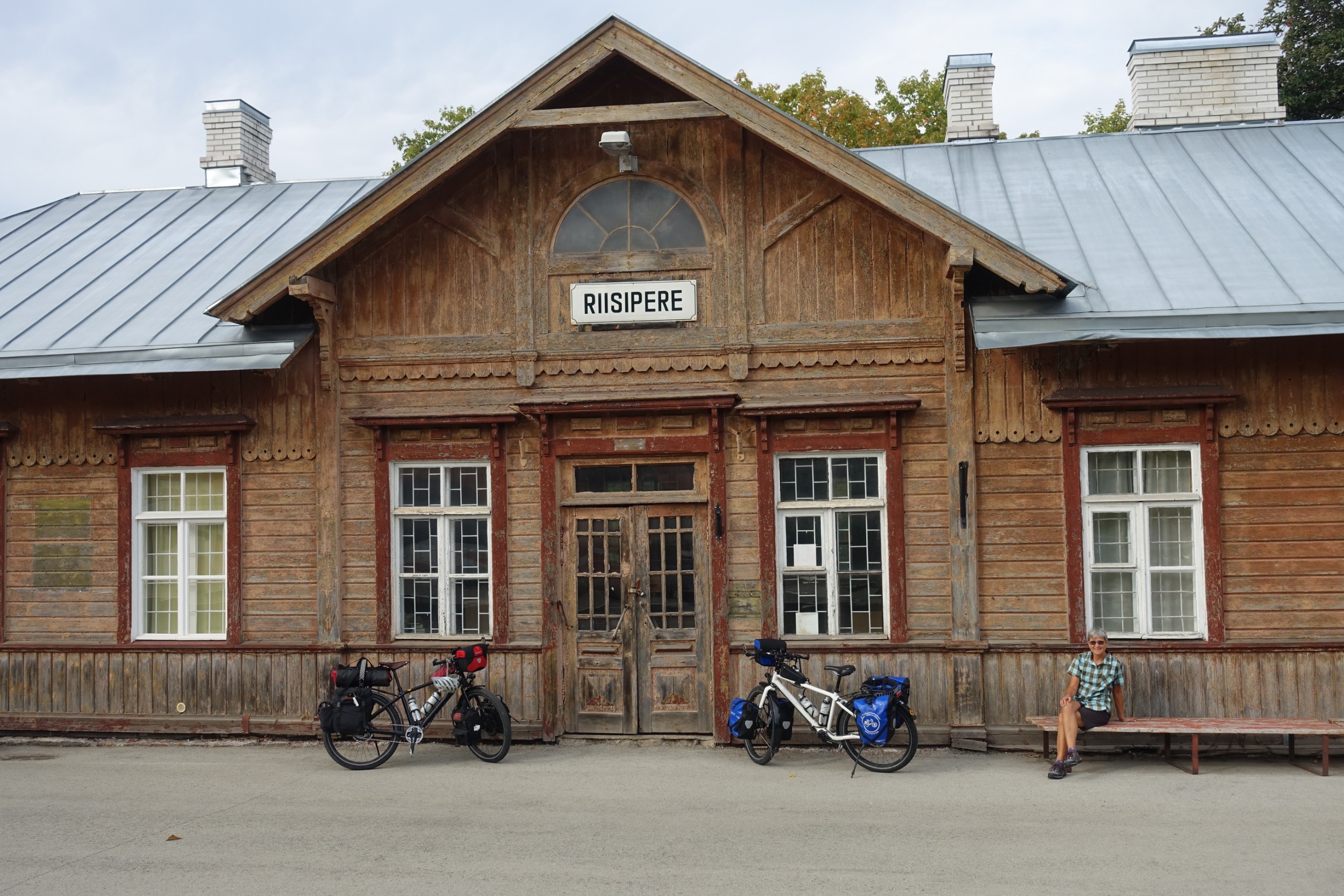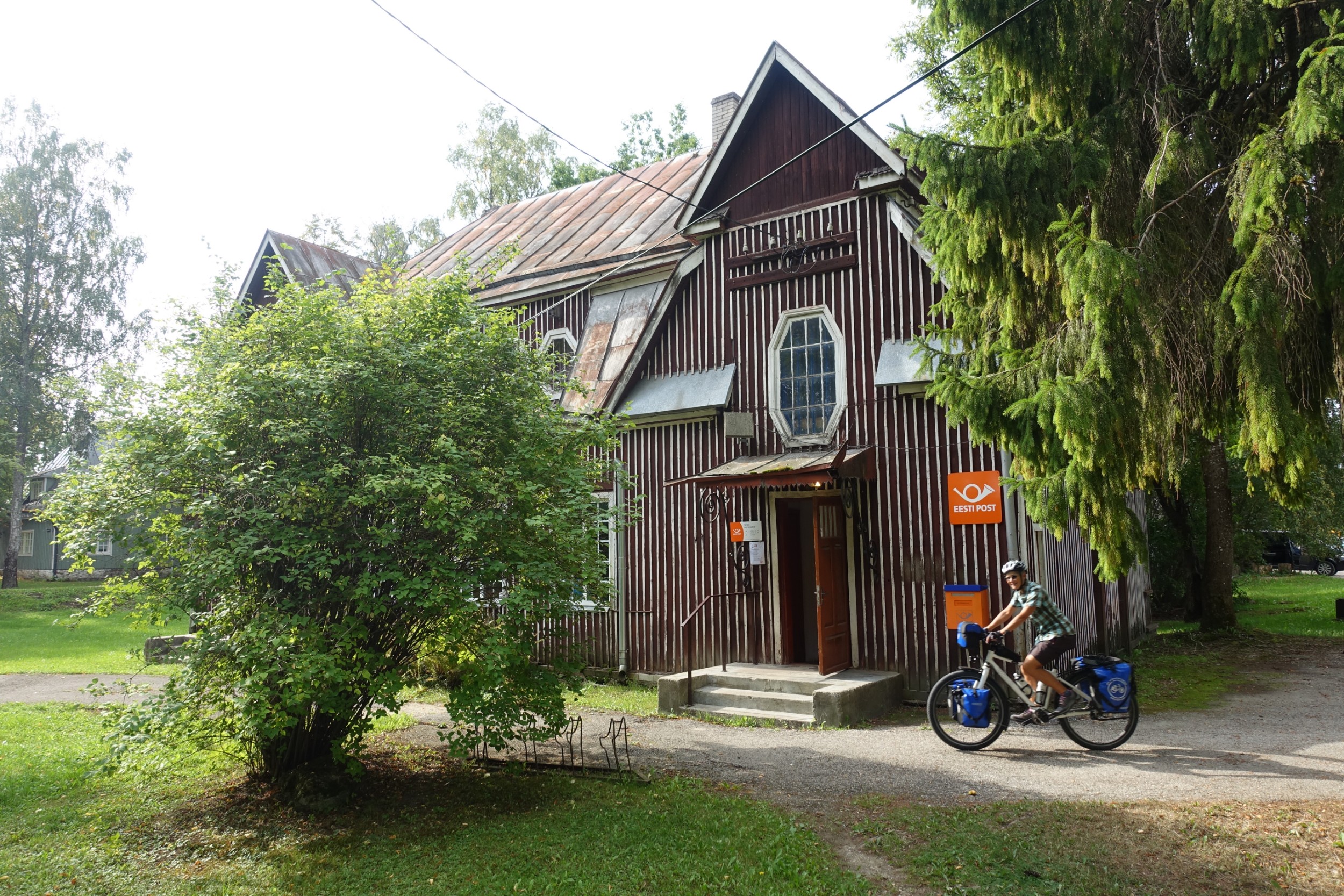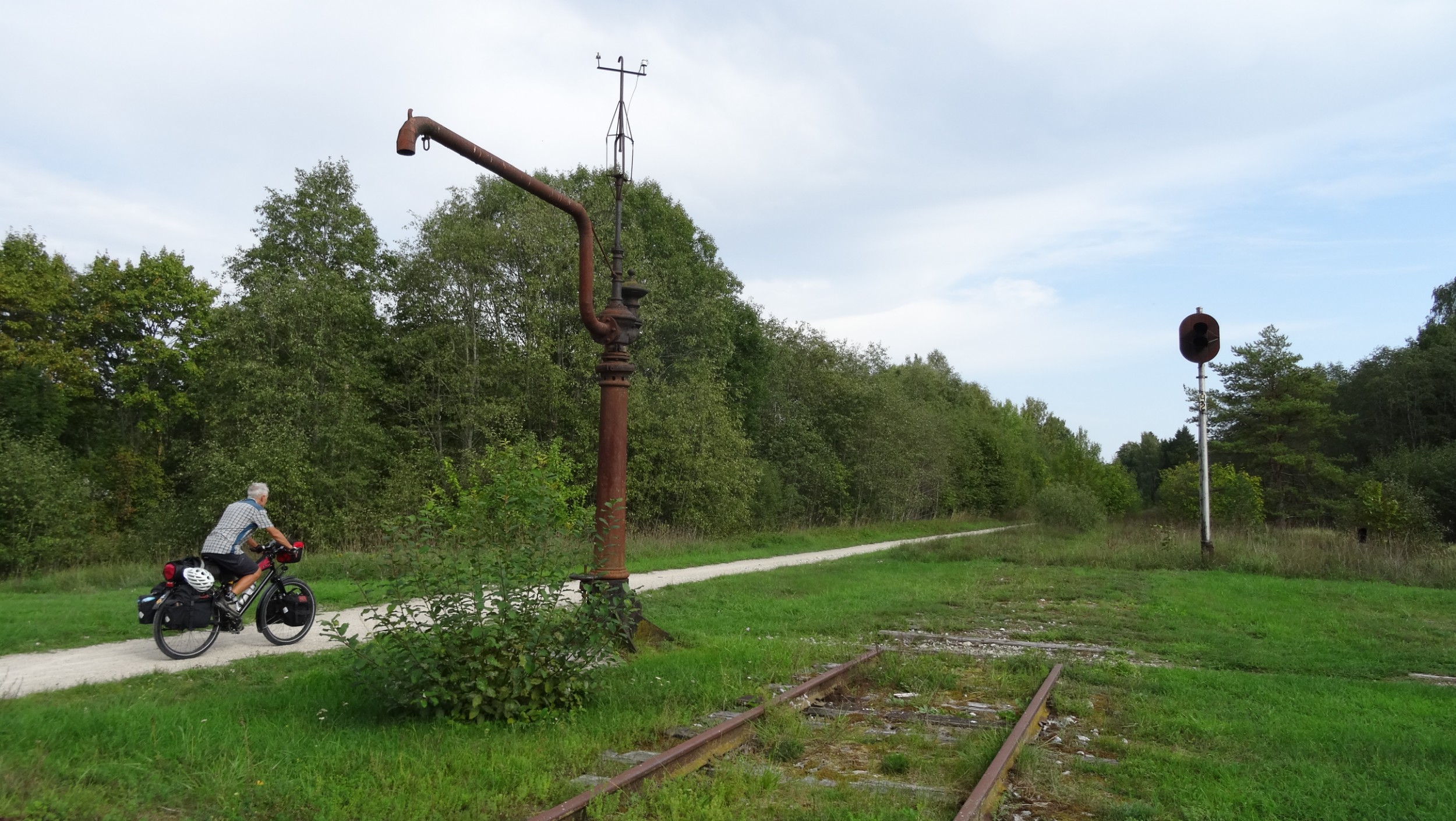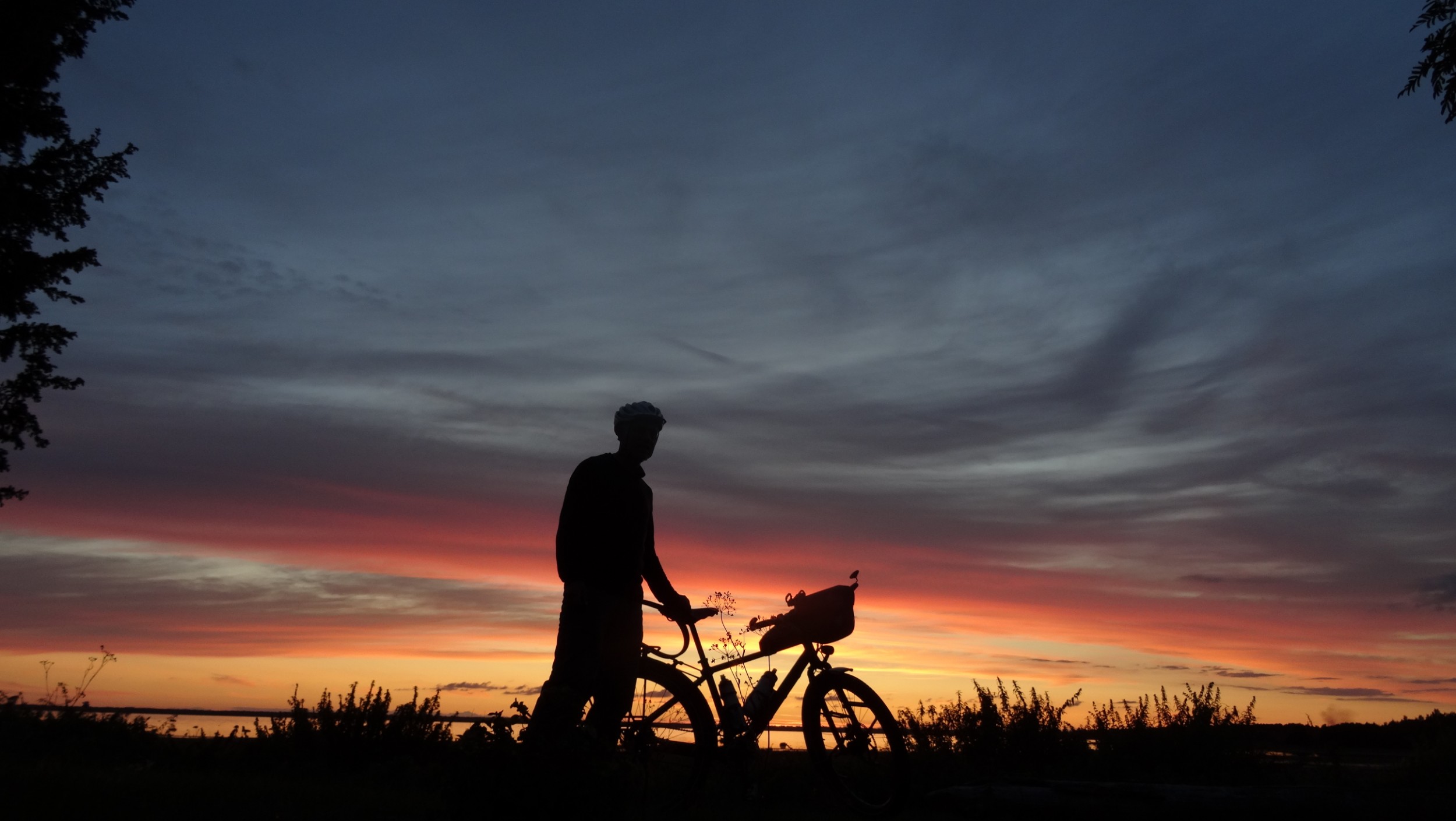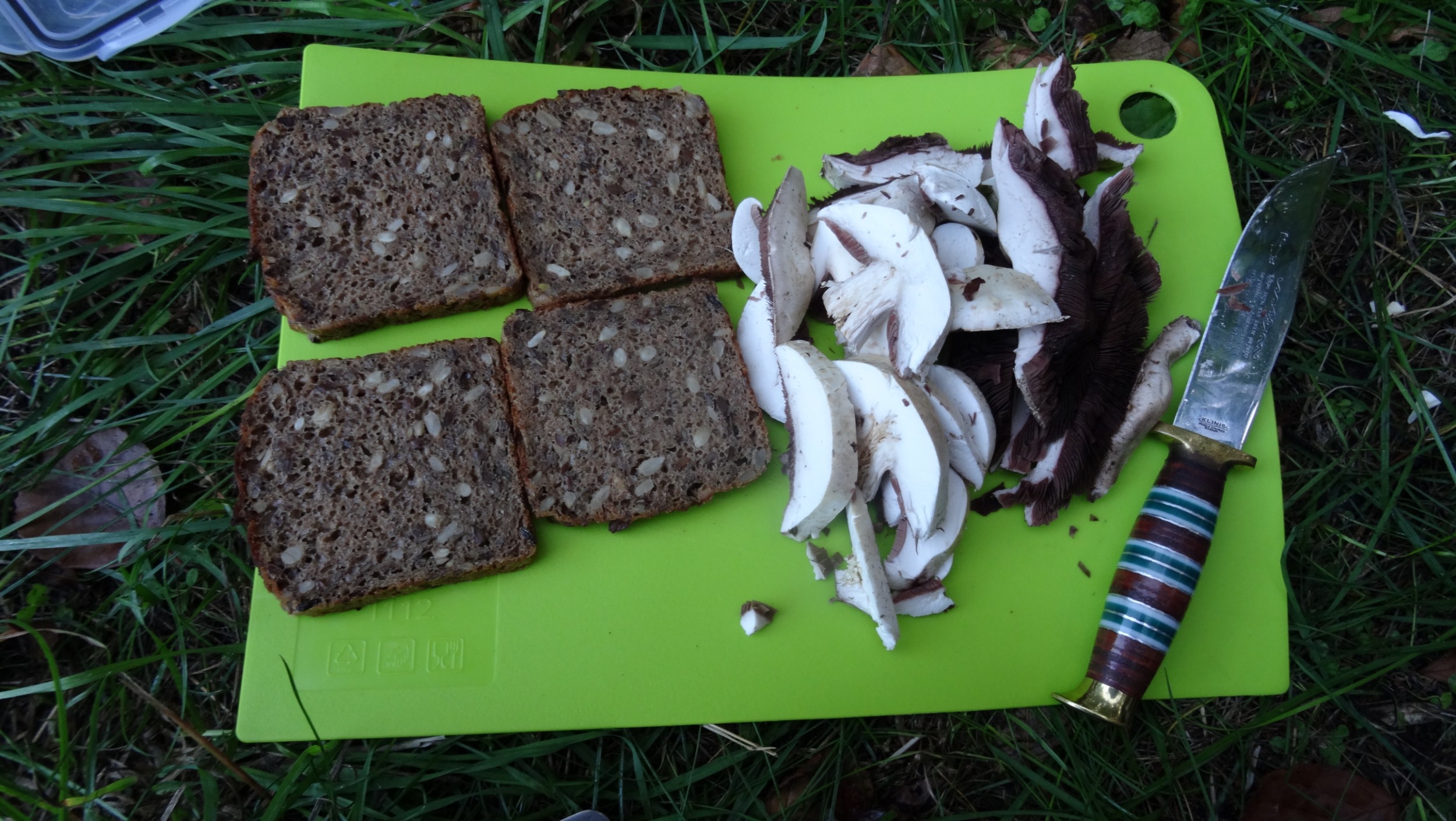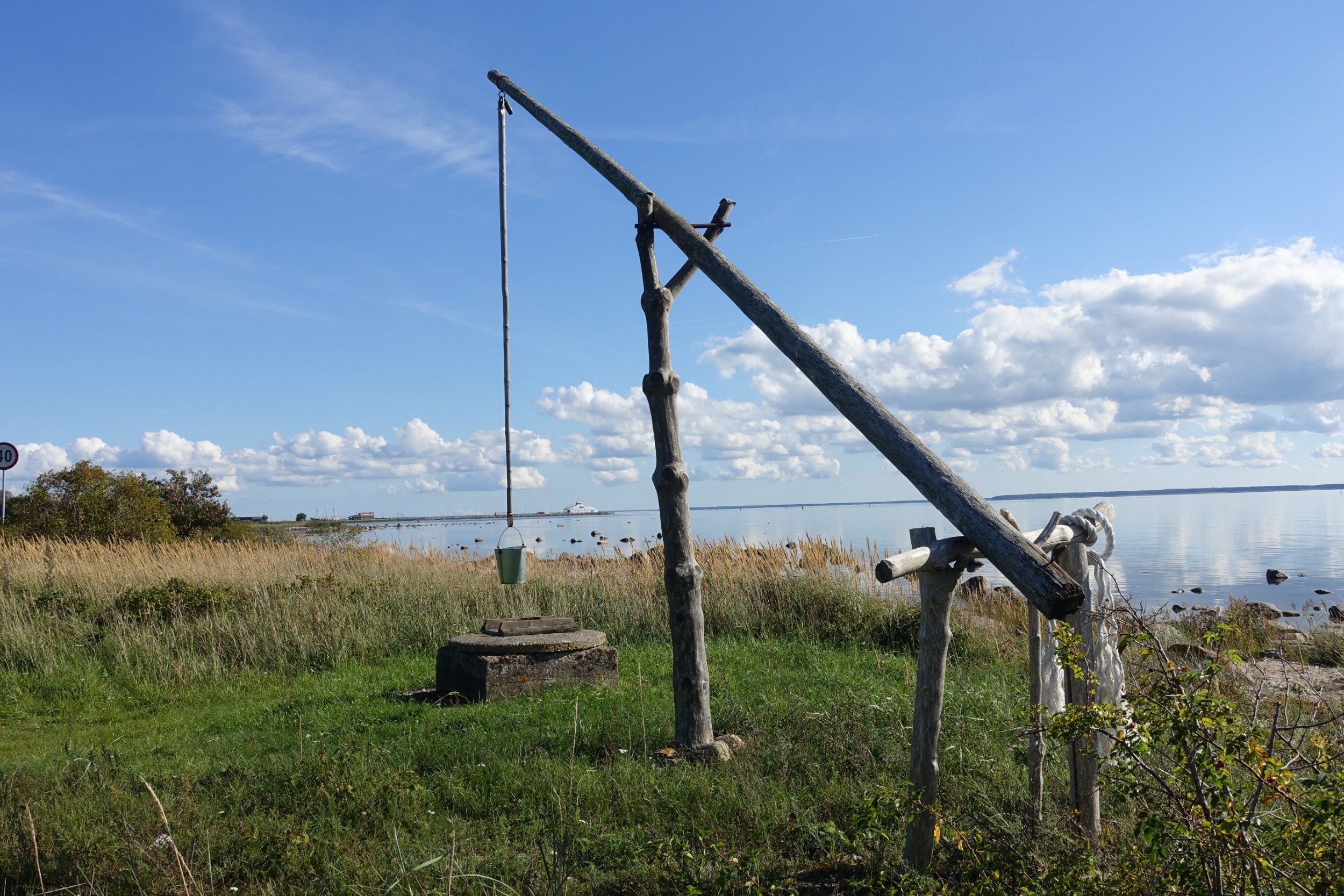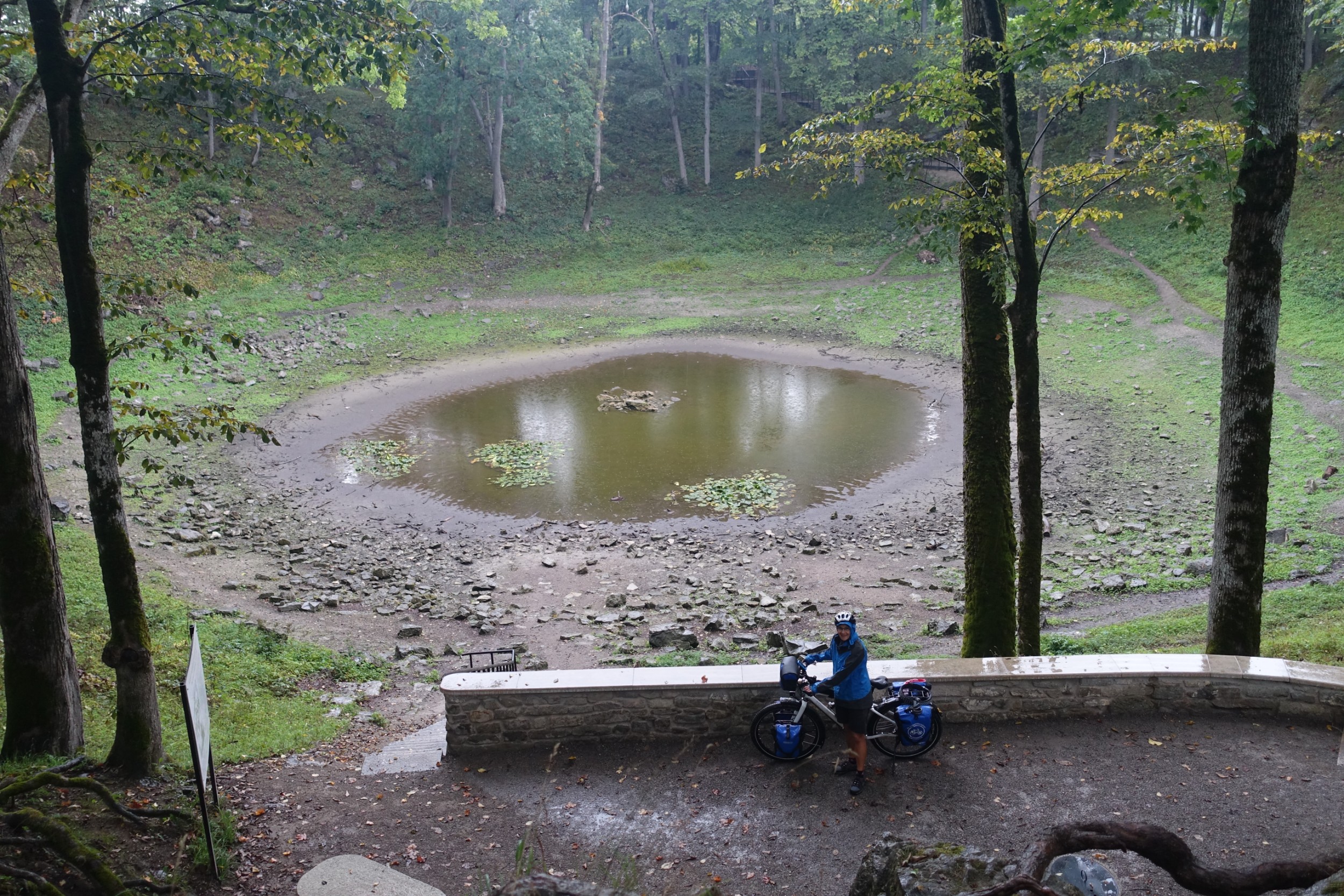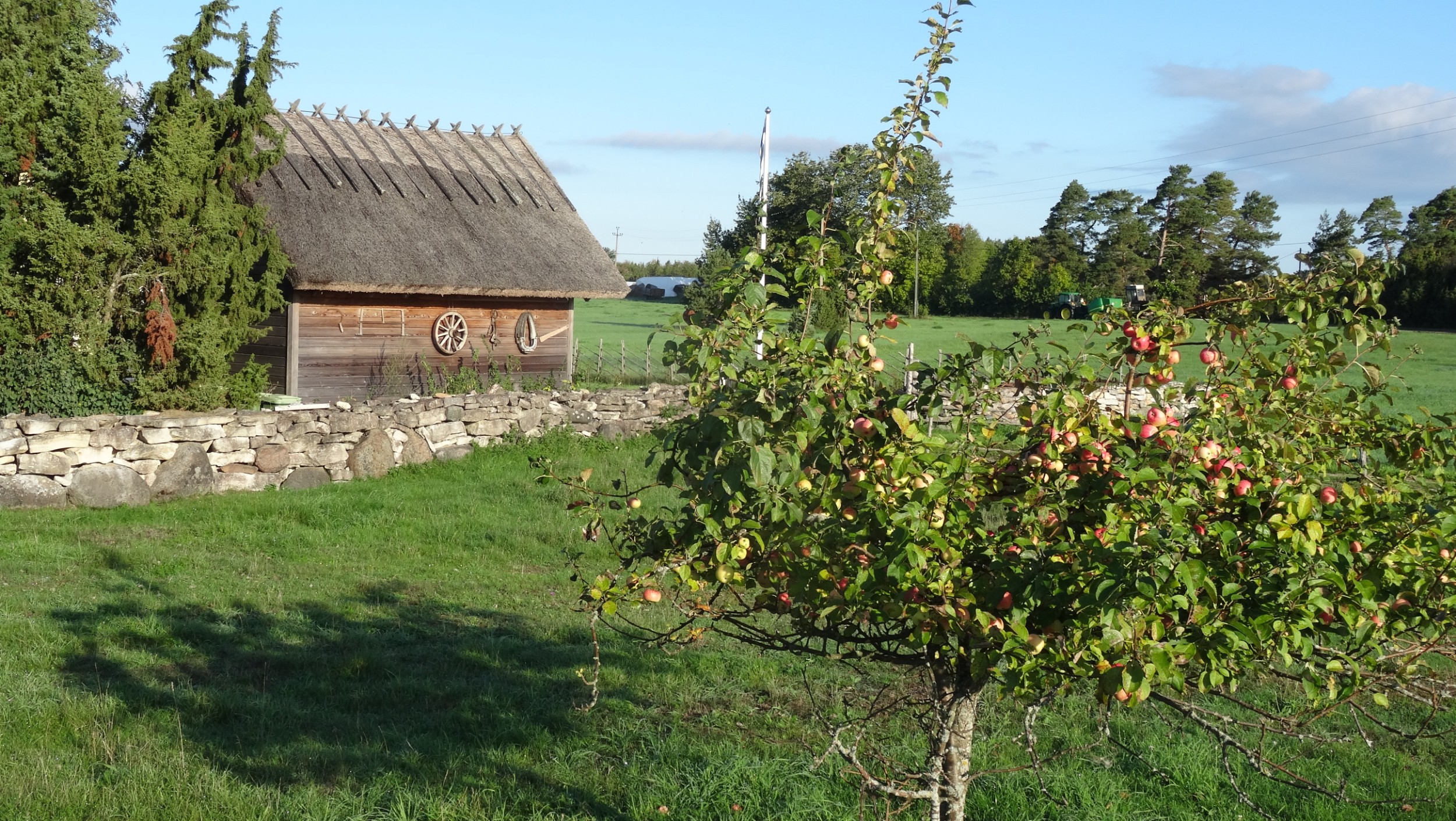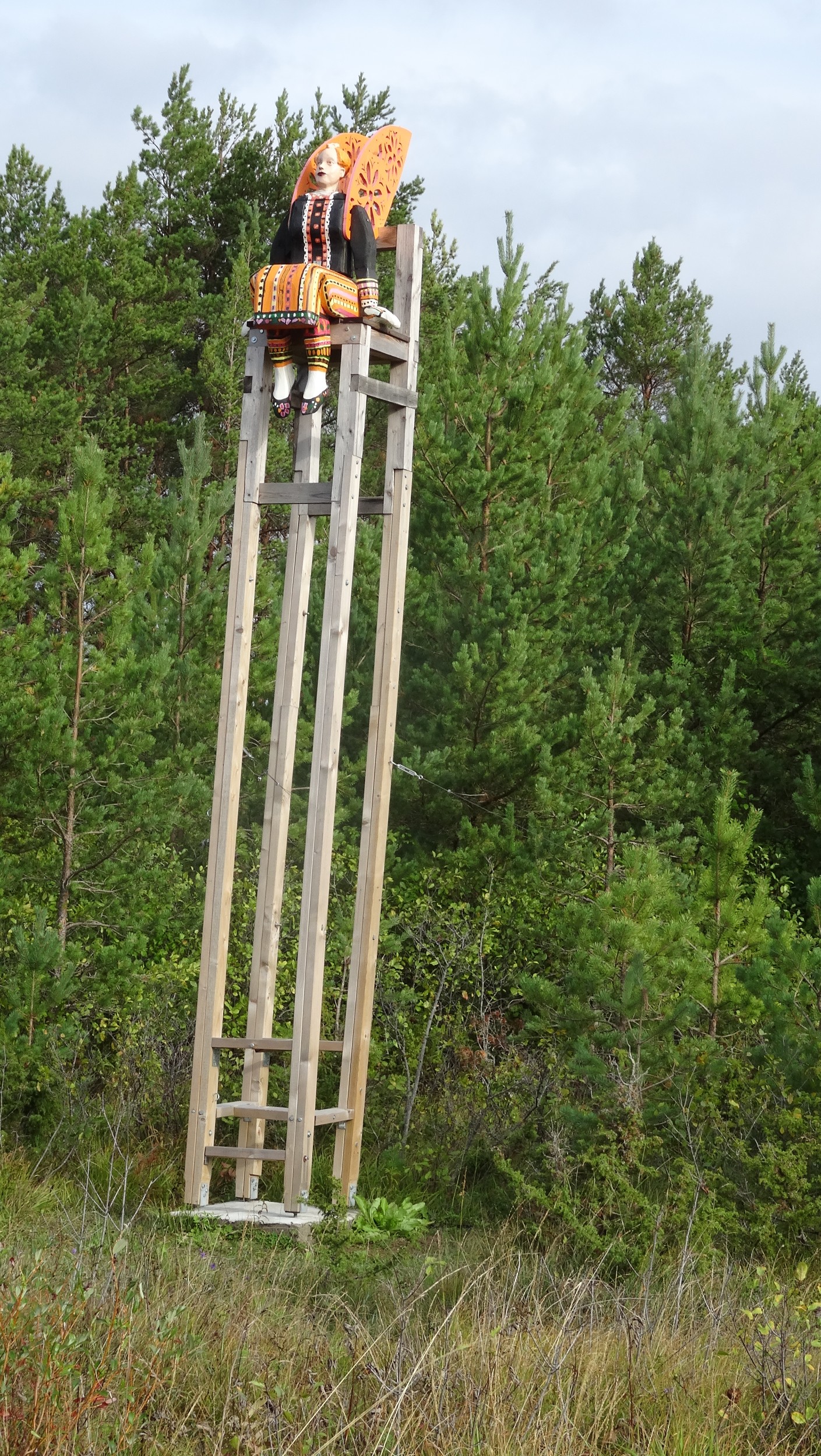Eastern Europe: Estonia
Louise George
The cruise ship we had travelled on, overnight from Stockholm, the Baltic Queen, berthed mid morning, and with the paper map and occasionally using Google maps to pinpoint our exact position, we easily skirted the old town and headed towards north-east Tallinn to the suburb of Pohja, where our accommodation was. We noticed that the style of housing in Tallinn was apartment living. The apartments closest to the city were wooden, either a natural brown or painted in pastel colours. Further out the apartments were concrete structures and we found we were staying in a residential housing block similar to the hundreds we had already ridden past. We had an almost new shopping mall one hundred metres away and although it wasn’t beach weather, there was a beach three minutes walk away.
The bikes were locked in the lower level, at the base of the stairs along with an assortment of other bikes and kick-scooters. The panniers were dumped in the room and we went to the supermarket for lunch supplies. What a surprise this supermarket was! Stacks of fresh fruit and vegetables, cold meats and fish, herrings mostly; presented in every way imaginable (smoked, marinated, pickled), a bakery with whole-grain, seed breads and black breads, and many cakes. Bowls of every type of salad. Cooked potato’s, even mashed! We couldn’t find any ready-made packet food (for a standby meal to carry on the ride) but there was certainly no need to cook here as there were so many other meals that could be microwaved. To sum it up, this was one of the best supermarkets we had ever seen!
We’ve seen many ‘old towns’ on our travels and each has been interesting to wander around. We found Tallinn both interesting and quirky! Quirky as in the entrance to the Farm Restaurant that was a display of stuffed animals having some ales! Some quirky handcrafts. Marzipan was manufactured here from the 19th Century, first sold in pharmacies because it was thought to have healing properties and later as a confectionery. I’m very fond of Marzipan so pigged out on Dark chocolate with Marzipan centres.
The entrance to the old town of stone wall and Viru gates was very impressive and we paid to climb the wall. The stone stair was narrow and steep ending in a large circular ‘war room’ that had an enormous fireplace along one wall. We got some good views of the city at rooftop height. Later on our walk we found other sections of wall (there is almost 2km of the wall still standing) and in all, 26 towers, that were more intact and photogenic. Unfortunately each section charges a separate entrance fee.
There are many museums in Tallinn. We chose to visit two. The KGB cells are housed in the basement of what is now an apartment block, but was formerly the headquarters of the KGB. The basement has a few small cells and each tell the sobering story of some of those interred here, before their deportation or execution under Soviet rule.
The Estonian History museum exhibit ‘Spirit of Survival, 11,000 years of Estonian History, is housed in The Great Guild Hall, a gothic-style building completed in 1410 as the home of Tallinn’s union of wealthy merchants. The exhibit gives an overview of the history of the Estonian people and the occupation of the country by whom and when. The details are staggering, but essentially Estonia has been occupied by the Swedes, Germans or Russians since the 1500’s until freedom from Russian occupation in 1991. In the last 800 years, Estonians have ruled their own country for only 40 years!
Freedom and Perseverance were words that featured in both these museums. I was reminded then, and many times during our travel in Eastern Europe, how fortunate we are, to be born in a country that our forebears chose to emigrate to, and that for us, has only ever known freedom.
Estonia has some interesting statistics:
Population: 1,354,989 (2018) of which about half live in five cities. 68% are ethnic Estonians.
The largest minority group is Russian, roughly 26%.
60% of the country is forest.
Population density 29/2km.
Estonia is not a religious country. There is no state religion and only 29% of the population claims any religious affiliation (Lutheran or Russian Orthodox).
60% of babies born, (2009) were out of wedlock.
Estonian’s are considered some of the unhappiest people! Possibly due to the Nordic winter and the hardship of the centuries of foreign rule.
I’m not sure how ‘unhappy’ pairs with their love of music and singing. There are regular song festivals in Tallinn attended by about 100,000 people. Imagine the joy of that number of people singing in one place! Evidently Estonia had a massive musical demonstration that in 1988 demonstrated against Soviet rule and was a catalyst towards independence.
We had two days in Tallinn, a city dating back to the 13th century, and explored on foot and by bike. There is a network of roads that skirts the old town, and out through the suburbs. Near the city centre, roads are narrow with many traffic lanes and these broaden as they extend into the suburbs; there are motorways that lead to other cities. Every road we went on in the city, (apart from the motorway, that we did not ride) had a cycle lane, either marked on the road, sharing a broad footpath, or sometimes a dedicated pathway. We rode out to the Kadriorg Palace and then through the enormous arena of the Tallinn Song Festival grounds, and then continued for a few kilometres towards the TV tower. The tower was still a long way off and we decided not to continue but should have done, because then we could say we had been to the second highest point in Estonia. The highest is Suur Munamagi, only 318m, and not in the direction we will be riding.
Returning to town we rode around the small Pae Lake. Our intention was then to have a look at Ulemiste Lake, that took up a large part of the city map. From the approach we took, the lake was beyond a network of roads, a motorway and a railway line. There didn’t appear to be an easy direct road to the lake and after riding single track along a wooded area that popped us into a cemetery, and nowhere near the lake, we had another look at the map and decided that if the lake had motorway along the shoreline, then it probably wouldn´t be an area worth looking at, and gave up. We will never know if we were wrong!
With the statistics mentioned earlier we envisaged our travel would be through flat, wooded, sparsely populated countryside; and we were right! There was about 1500 kilometres between Tallinn and Vilnius, in Lithuania, where our flight left from, and not much elevation over that distance. We had 21 days to cover Estonia, Latvia and Lithuania.
For our first night we’d booked a cabin at Kuijoe, about 12km away from the section of the rail trail route we’d planned for the day. That would make our first day back on the bikes to 98km, a distance we hadn’t covered, all in one day, for weeks. We decided to make the day easier by taking a train, only an hour’s journey to Risipere. From Risipere we started the Laanemaa Tervisetee (64km long Health Trail) built along a disused railway that “gives locals the opportunity to exercise (walk, jog, cycle or ski) enjoying movement, joy, fresh air and wonderful nature such as rural settlements, bogs and woodlands”.
The first 12km was a fast, flat, straight, lightly gravelled path through woodlands of birch, oak, pine and juniper. We left the trail to see Turba, a small rural town that boasts a Post Office in an old wooden building and a motor sport museum housed in a former power supply building; we didn’t enter either. There were a couple of high-rise apartment blocks and little else. Back on course, the route continued as before, all the way to Risti. We had a little excitement that day! At one point we saw lights ahead and eventually came across a double trailer logging truck. We squeezed passed, and then watched the driver negotiate a narrow bridge, with tyres hanging over the edge! We saw a snake in the middle of the track, and a squirrel darted away quickly at one point. We found the blue berries (Logan berries) we had read about that grow wild, and sampled a few. Similar to a blackberry, except blue; even though plump and juicy looking, they were a little tart.
Risti had a memorial to the 3000 people of the region who would have passed through the Risti Station on their deportation to Siberia. Nationally the Soviets organised two major deportations, in 1941 and 1949. At least 30,000 people were deported on account of their nationality or financial status. In addition it is estimated that between 1940 and 1988, 60-80,000 we’re arrested and sent to Russian labour camps. That equates to about every tenth Estonia resident, deported during the period of the Soviet occupation.
A large scenic place of natural interest is Marimetsa bog and we went to seek it out. Evidently there is an 8km nature trail of which 5km is boardwalk and there are 3 watch towers for bird watching. The bog is a migration stop for cranes and there are Golden Eagles and wading birds. We rode for about 5 km and then came across signage showing we had another 11km to get there. We were heading in the opposite direction of our cabin, so turned around and headed back to Risti. Bog visit wasn’t really on our ‘must do’ list. On the way to Kuijoe I realised we’d forgotten to go and look at the 250 year old pine tree!
Just as well we’d purchased Instant Noodles and cheese at Risti Coop. We found that Rehe Turismitalu (our accommodation) only provided dinner with advanced notice, so our dinner was going to be meagre. We bought from our host, some eggs and bread, and a couple of bottles of his craft beer. We didn’t go hungry and we had a cosy little cabin to sleep in.
Yesterday the rail trail hadn’t been visually stimulating so we decided rather than ride 12 km to return there, we would take a road that ran on a diagonal to Haapsalu. We noticed that the road we travelled on was signed EuroVelo Route 10; the route was flat, and the scenery almost identical to that along the rail trail; forest each side of the road, the occasional small house tucked among the trees, and then towards the coast some larger farms, cattle, and rolled hay bales. Only seven vehicles overtook us in the first hour! We didn’t really stop the 35km to Haapsalu, apart from, on the outskirts, where we stopped at a supermarket in a new shopping mall (as was our experience in Tallinn, there were no people in the shops, except the supermarket).
Haapsalu is a historic seaside spa town, famous for the healing powers of its mud. In times passed it was often frequented by the Tsars of Russia and other Russian aristocracy. At one time Tchaikovsky also visited, and worked on a piece while he was staying here, incorporating a local tune into the music score. There is a bench on the promenade in memory of this. Today tourists walk the Promenade, and see the sites already mentioned, take a spa, poke around souvenir shops and eat at restaurants. A visit to the Episcopal Castle in the centre of town is also of interest. The castle, established in mid 1200 was built over the next 3 centuries, as a diocese for the bishop. Within the castle walls there is a cathedral with a window, haunted by the ‘white lady’.
The ferry to Huuimaa Island leaves from Rohukula. On the way we passed the impressive ruins of Ungru Castle and taking time over getting the best photo meant we had to fly to catch the boat. Just made it!
Huuimaa Island was not in our initial plan but Nev doesn’t like to backtrack and riding through the island would mean we wouldn’t have to do so. From Huuimaa we intend crossing by ferry to Saaremaa Island and back to the mainland via Muhu Island. On Huuimaa Island we only stopped to look at the exterior of a church and a windmill. By the time we got to Saaretirp, we’d covered in total today, 82km. Saaretirp is a spit that, legend has it, started to be built as a bridge, from this point to Saaremaa Island, by a giant of a man named Leiger, however it was never finished. We experienced our first free-camping that Estonia boasts about. Our tent was pitched in a huge mown area beside a cluster of trees. There were long-drop toilets and an enormous wooden swing that would seat a number of people on benches at either end of a wooden platform. Evidently swinging in Estonian is a cultural ‘thing’. People come together at times of celebrations to swing and sing together. 500 metres, in the direction we’d come from was the Lest & Lamas Restaurant that we returned to for dinner. Then we dashed to the seashore to catch a stunningly rich sunset.
Breakfast was camp pan-cooked wild mushrooms, black bread, and a few red currants found growing near our tent.
An easy 31 kilometres got us to Soru to catch the ferry, but we weren’t sure what the ferry timetable was. Apart from a couple of photo breaks and an ATM stop there was no reason to delay. We saw a ferry at the dock and rushed to board it; only to be told that the boat doesn’t sail until 17:30! It was now only 11:00, there was no cafe, or Internet. The museum was closed. Only a shop with a coffee vending machine and a few provisions was open, so at least we could buy snacks. It was frustrating to see the ferry berthed, but not going anywhere, and that the island of Saaremaa was in sight, a distance of what appeared to be only one kilometre away, and we had 6&1/2 hours to wait. With our tight schedule we might get behind in our riding time! Yet if we wanted a perfect day to be stranded this would be it. The temperature was 23C, the sun shone and there wasn’t a breath of wind. The sea was as calm as a millpond. There was a swing that made an ideal spot to hang washing to dry and update the blog.
Later in the afternoon three other cycle tourists came to catch the ferry. They were three men from Finland, who go on an excursion together for a week every year; two of them were on e-bikes. We enjoyed a discussion about bikes and cycling in Finland. By the time we’d docked at Saaremaa it was 6:30 p.m. While on the ferry we had used the free Wifi frantically, and we knew the restaurant at Leisi, a few kilometres away, would close at 7. We arrived with 10 minutes to spare and the lady was happy to serve us. The air was cool as we left Leisi so we put on an extra layer and hit the road. While riding on Huuimaa Island, we’d thought the bus stops, small shelters with a door and window, would be good for a late stop, and decided we’d stay in one here, as soon as it started getting dark. Only problem was the bus stops on Saaremaa we’re only three sides with a bench at the rear and the road facing aspect was open. We set up camp in an area beyond the road and went to bed.
Waking to the patter of rain didn’t inspire us to start the day, but we had a long one planned. This was the first morning ever on our cycle tour that we ate breakfast inside the tent. The rain had stopped by the time we were ready to ride, but it caught us later and we stood in a wooded area waiting for it to ease. We’d taken a small detour to see the Kaali meteor crater, and got caught in another downpour. The crater had been publicised as, “first in Europe and second in the world, which has proven meteor heritage” so internationally unique. This was the largest of nine craters in a one square kilometre area. While impressive that a meteor should find its way to land on the island of Saaremaa, I think one of the comments we got on Instagram summed it up; ¨that it looked like a New Zealand pond¨! Fortunately the rain eased to light drizzle and by the time we arrived in the town of Kuressaare it had stopped and we remained dry the rest of the day. Kuressaare is another spa town catering to tourists, but the tourist season is over and there were only a few people about. The entire town centre was rather unattractive as it was undergoing major road works and was dug up from building to building each side. It will look great for next year’s summer season, but we dodged working machinery, rain puddles and open ditches. We walked along the castle bastions, and got a view of the beach, but the castle and museum were closed. Another area promoted as interesting was the Panga Cliff. In a country that is largely vertical, a horizontal cliff of 21.2 metres is probably stunning, but the photos publicising the feature were taken from a drone over the ocean, looking towards land, and we were never going to get that view!
With 58km to Orissaare we needed to get moving. We rode the EuroVelo 10 route, along a quiet secondary road, through farmland. With only an occasional stop to take a photo or sample free-fall apples, we pretty much just kept moving. We’d made a note of a couple of accommodation options at Orissaare but didn’t want to book anything. I thought we would pass them both on the way into town, but no luck. Evidently I didn’t have the map oriented on my phone, so they were both the other side of town. Fortunately we found a hostel with a spare room, but no food, right in the middle of town. At the end of that riding day my Garmin showed my fastest 40km in 2 hours. I thought that was pretty good for a loaded bike! Nev thought it was a cheat when I told him the time pauses when I stop.
From Orissaare we rode across the land bridge, to Muhu and then across the small island. A short ferry ride then took us back to the mainland. We chose to leave EuroVelo 10 as it followed the coast to Parnu. We cut through on the diagonal and shaved off 44km. I’m sure the two routes would have been much the same; quiet country roads, farmland and forest. With the rain gone, the wind had come up, and mostly from behind it was in our favour as we covered 96 km. Parnu is a town on a peninsula and as we crossed the bridge we noticed a Mexican Restaurant and unanimously decided that was going to be our dinner destination. When we returned later, we were the only customers! Tourist season is finished! Our room in Parnu was one bedroom of three, with shared kitchen and bathroom, in a residential block. All of the rooms were very small but the bathroom included a washing machine (a rare treat) so our room became rather cramped with gear, bikes, and drying rack!
We stopped at Parnu’s wind-swept beach just long enough to be sand-blasted while taking a photo. The beach looked like it would be a lovely place to be on a summer’s day. A self-guided walking tour of Parnu didn’t take long so we were soon on the bikes for the day’s ride. There was only one direct route south, following the coast. We were back on EuroVelo 10 that, wherever possible, would take us onto small roads that ran parallel. The main road had a wide sealed shoulder, edged with compacted gravel. While there were a lot of trucks and buses, in reality the traffic was quite light. With long spaces between vehicles, both on our side and on-coming, the drivers were all very considerate, giving us at least half a lane as they overtook. We got into slip-steam mode and moved along easily. Generally the wind had been in our favour and the rain showers light enough to only be a nuisance. After 57km, near Kabli, we came across a camp. Although a number of children were on school camp there, they were happy for us to pitch our tent, sheltered behind reeds on the sea-shore that the wind had made dirty brown and frothy.
The coastal route continued; flat, forest, occasionally farmland, with no view of the ocean. There were only a couple of small towns and only some had a COOP store that had little in the way of fresh provisions. The coastal forested area is popular for people hiking, there are many trails marked through the woods; there are also wild animals such as Linx and Beaver and snakes. Free camping is allowed at designated areas that have long-drop toilets and a supply of firewood available and steel fires to burn the wood in. We were disappointed not to have found one of these camp sites at a distance that matched a time we would want to be stopping for the night. Then we crossed into Latvia (you can read our Latvia blog here).

